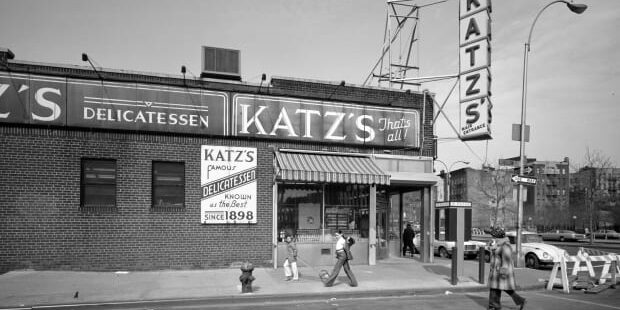Morton Salt Building Clears Major Hurdle To Secure Landmark Status

[Chicago] City leaders reviewed a plan to convert the Morton Salt building near Goose Island into a concert hall and office building.
From Block Club: Chicago: GOOSE ISLAND — The old Morton Salt plant on Goose Island soon could recognized as a historic structure — protecting it from demolition.
The Commission on Chicago Landmarks voted unanimously Thursday to approve preliminary landmark status for the building and surrounding properties along 1305-1357 N. Elston Ave and 1213-1251 W. Blackhawk St.
The developers who plan to convert the old salt factory into a music venue and office building applied for landmark status, which ensures a building can neither be demolished nor renovated without city approval. The proposal still requires review from the city’s zoning commission and the City Council for the landmark status to be permanent.
Remembering Rosie’s Diner

From K102.5: There was a time when people would make the drive to Rockford, Michigan to have a meal at Rosie’s Diner. Those days are long gone. It’s sad to see how over the years this destination has gone from a favorite — to scrap metal.
Years ago, the restaurant was originally known as the “Silver Dollar Diner” in Little Ferry, New Jersey. it was built in 1946 by the Paramount Dining Car Company. and first opened in the 1940s.
The diner was used as the setting for many TV commercials over the years. Companies like Sanka coffee, Pepsi, Ethan Allen Furniture, and Sony used the New Jersey diner location for their advertisements. The diner was made most famous by the Bounty paper towel commercials that were filmed inside the diner during the 1970s. In the ads, clumsy patrons would knock over beverages, and Rosie the Waitress (played by Nancy Walker), would clean up the mess using Bounty paper towels — the “quicker picker-upper”.
50 of your favorite retail chains that no longer exist

Annexxation // Wikimedia Commons
From K92.3: At the start of 2020, many of America’s beloved major retailers announced that they’d be closing their stores—Papyrus, Macy’s, Pier 1 Imports, JCPenney—the list goes on. It’s a pattern we’ve seen in retail history, time and time again. It starts with chains downsizing, attempting to manage their debt and restructuring. Some are able to recover. Many, however, end up filing for bankruptcy and/or getting bought out, and eventually folding.
Are you ready to see the top 50 major retailers that no longer exist? Keep reading to see if your favorites made the list.
Demolition Begins at the Sun-n-Sand Motor Hotel

The demolition of the iconic Sun-n-Sand Motor Hotel in Mississippi. Mississippi Heritage Trust
From the National Trust for Historic Preservation: Demolition is underway at the midcentury Sun-n-Sand Motor Hotel in Jackson, Mississippi, one of the places included in the 2020 list of America’s 11 Most Endangered Historic Places. The Sun-n-Sand was a fixture of downtown Jackson from its opening in 1960 until it was shuttered in 2001. Despite the dedicated efforts over many years of the Mississippi Heritage Trust and other advocates across the state and country, the building will be torn down to create a surface parking lot for state employees.
The iconic sign and the commercial portion of the hotel will be retained and used as meeting or retail space, but this partial salvage is not a preservation victory—the hotel rooms that defined the building’s use will be lost, irrevocably changing the character of this historic place.
15 of America’s Most Historic Restaurants

Edmund Vincent Gillon/Museum of the City of New York/Getty Images
From the History Channel: How does a restaurant become “historic”? For most American eateries, it’s a feat to survive even a few years—much less decades or centuries. In the brutally competitive industry, statistics suggest that 60 percent of eateries don’t make it past their first year; 80 percent close within five years.
But around the U.S, a select coterie of restaurants has defied the odds—enduring world wars, the 1918 flu pandemic, the Depression and more.
These historic eateries offer diners an astonishing panorama of the country’s political, social and demographic history, as well as its culinary traditions. Some feature menu items dating back to the country’s founding—tavern foods, oysters, steak, turkey. Others reflect successive waves of immigrants, offering new arrivals a taste of home. Still others catered to Black Americans migrating north in the first half of the 20th century, offering grits, fried chicken and other southern favorites that came to be known as “soul food.” As the decades passed, a core group of these institutions survived and thrived by redefining the very meaning of “American” cuisine to include their dishes.


